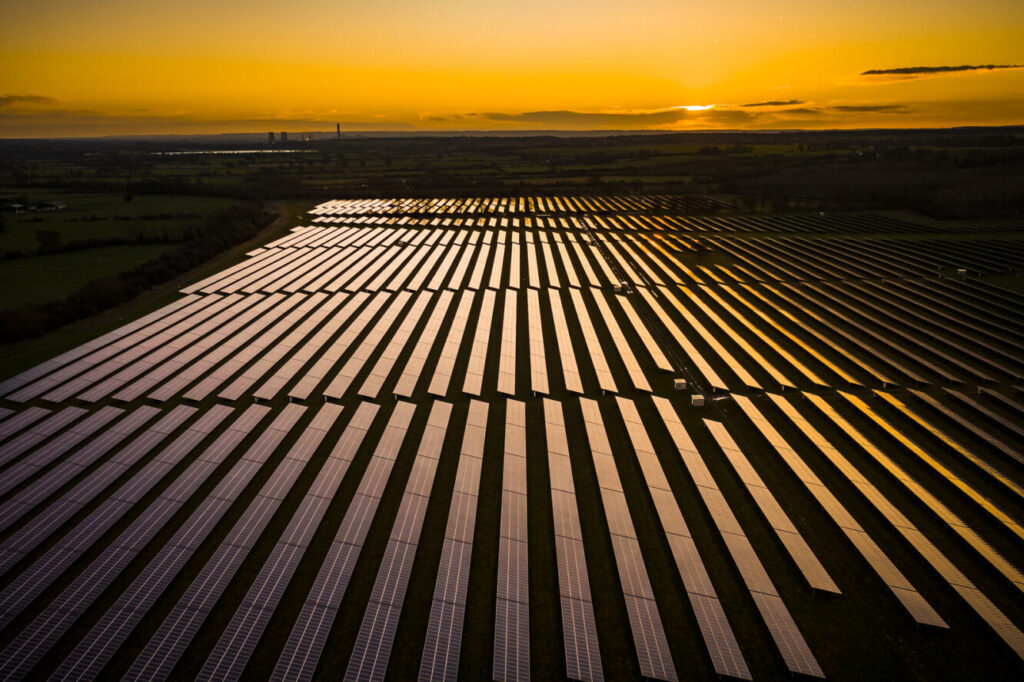Uncertainty turns US renewables into buyers’ market
Ongoing uncertainty in the US renewable energy sector has shifted the landscape into a buyer’s market.
“[Now is] quite honestly, the most exciting time to be investing in renewables,” due to a “confluence of factors” that includes political uncertainty, rising interest rates, and desperate counterparties, Michael Bricker, senior managing director and co-head of energy at global infrastructure investment firm Stonepeak, said at the Mergermarket Private Equity Forum Austin on 7 October.
“In 2020, during COVID, oil and gas were left for dead, counterparties became distressed. [With] renewables it’s eerily similar five years later,” he added.
Stonepeak in April acquired a 46.3% stake in Repsol’s 777 megawatt (MW) solar and battery energy storage portfolio across New Mexico and Texas for USD 340m, and in March 2024 acquired an undisclosed stake in four US onshore wind farms from Orsted for USD 300m.
“Private equity [firms] that have platforms in place already can opportunistically acquire assets for much lower valuations than they could a year ago,” Alex Leff, a partner at Clifford Chance who focuses on renewable energy and infrastructure, told this news service in September.
Leff noted that he sees PE clients with “cash to spend” actively seeking acquisition opportunities, especially for platforms that might be somewhat underwater.
Early to mid-stage projects – those that haven’t passed key steps like financing, permitting, and design – are among the most common coming to market, Leff said.
A central provision of President Donald Trump’s One Big Beautiful Bill is that renewable energy projects need to meet certain development milestones prior to 2027 to retain the benefit of federal tax credits.
“Can a buyer of these projects safe harbor fast enough to lock in that tax credit or develop a strategy with respect to that project that is not reliant on tax credits?” Leff questioned.
Small, financially struggling, subsidy-dependent battery energy storage system (BESS) companies are also expected to come to market, said Chris Taylor, CEO of Goldman Sachs Asset Management-backed battery developer Gridstor.
Taylor anticipates battery platforms coming to market will “attempt platform sales that will really become a portfolio sale,” as most potential buyers of defunct battery businesses with mid-stage assets likely already have a platform of their own.
Infralogic reported earlier this month that Greenbacker Capital-backed GDEV launched a sale process for its BESS subsidiary Lightshift Energy, with KeyBanc leading the process.
Lightshift has four BESS projects ranging from 5 MW to 16 MW under construction, and has a development pipeline of 16 gigawatts hours, according to its website.
Bidders, however, are unlikely to acquire mid-stage development assets without having their own development teams, Taylor said.
And although BESS companies could seek PE buyers, “that’s going to be a harder sell than finding a bigger, established company to buy them and keep the assets.
This news service reported in September that general partners are prioritizing late-stage renewable energy projects and niche subsectors amid rising interconnection costs, supply chain bottlenecks, and a reduction in government support and funding.
Unusual sellers
The market dislocation has even turned some consistent buyers into sellers, Leff said. “We have seen a number of strategics that were usually just buyers, enter the market trying to dispose of assets,” he said. “These were not historically [players] that strategically developed and sold assets, [but] those that had long-term goals to build balance sheets and monetize renewable assets long-term.”
Right now, many strategics are unwilling to hold onto projects with uncertain commercialization timelines, Leff said. “If they have an opportunity to recoup funds and dispose of those assets, they’re willing to forego what might be a fairly good opportunity in the long term so that they can redeploy that recouped capital in areas where they may have, at least in the near term, more strategic alignment with a larger business initiative,” Leff said.
Some of these projects and portfolios will be acquired by sponsor-backed platforms, he said, pointing to EQT-backed Madison Energy Infrastructure’s acquisition in September of NextEra Energy Resources’ distributed generation development platform.
The deal shows that some PE firms have taken a clear stance on renewables amidst uncertainty, Leff said.
International private capital providers are also a new breed of sellers as they seek to exit the US renewable energy sector, said Enoch Varner, another partner at Clifford Chance.
“A number of global capital providers have said they are no longer looking at [offshore] wind in North America [and] shifting their focus to Europe … because they have the luxury of deploying capital outside of the United States during the continued period of uncertainty,” Varner said.
Some PE firms have an aversion to deploying capital to “anything IRA or tariff-facing,” he said, referring to The Inflation Reduction Act enacted during former President Joe Biden’s administration that grants federal tax credits to Clean Energy generation projects.











